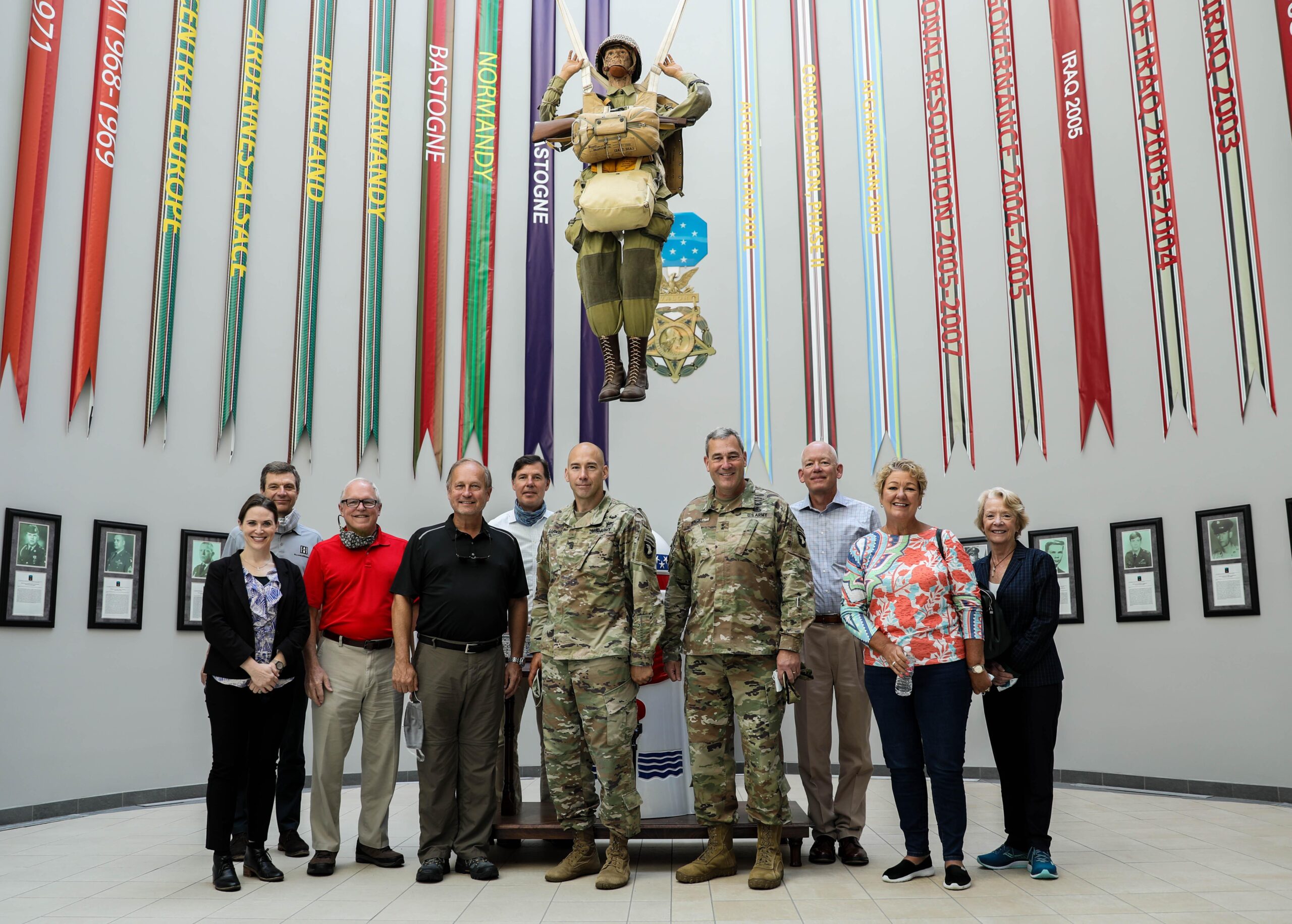With proximity to Clarksville, Tenn. and the Nashville MSA, Fort Campbell is an economic driver for the regional economy and serves as a pipeline of qualified workers for area companies. Located on 106,700 acres on the Tennessee-Kentucky state line, the installation is home to the 101st Airborne Division (Air Assault), 5th Special Forces Group, 160th Special Operations Aviation Regiment, and many other support teams. Its location provides a unique ability to deploy mission-ready contingency forces by air, rail, highway, and inland waterway.

In mid-July, a group of Nashville Area Chamber board members and staff traveled to Fort Campbell to meet with leadership and strengthen economic ties between the Nashville Area Chamber, Fort Campbell, and area employers. With as many as 5,000 soldiers transitioning from Fort Campbell to the private sector each year, much of the group discussion focused on preparing soldiers for transition from active duty to post-service employment.
Nashville-area employers represented included Chamber board chair Wanda Lyle of UBS, and Chamber board members Jim Gingrich of AllianceBernstein, John Gromos of Turner Construction, Al Pramuk of Gresham Smith, Brad Southern of LP Building Solutions, and Claire Tucker of CapStar Bank.
While at Fort Campbell, the group received several briefings, demonstrations, and opportunities to tour the facility. The group heard from Col. Jeffery Thompson, Chief of Staff of the 101st Airborne Division (AASLT). Col. Thompson shared the history of the “Screaming Eagles” from World War II to the present.
The group then had an opportunity to speak with Fort Campbell’s Senior Commander, Maj. Gen. Brian Winski, Commanding General of the 101st Airborne Division (Air Assault) and Fort Campbell, and Command Sgt. Maj. Bryan Barker, Command Sergeant Major of the 101st Airborne Division (Air Assault) and Fort Campbell.
After a presentation and demonstration at The Sabalauski Air Assault School, the group learned about Fort Campbell’s workforce programs, including its Soldier for Life Transition Assistance Program, Spouse Employment Center and the Campbell Strong Workforce Partnership supported by Workforce Essentials and the TN Department of Labor and Workforce Development. These programs offer connections with employers in the region and opportunities for training, certification, licensing, and job search assistance.
The visit concluded with a chance to hear from a 5th Special Forces Group Operational Detachment Alpha (ODA) team, learning more about what makes this U.S. Army Armed Forces unit so unique and sharing ideas about employment opportunities and life after active duty. Special Forces units are known for their ability to deploy in small teams and operate in harsh environments. The group discussed how to best translate skills acquired in the U.S. Army to jobs in the corporate world.
Fort Campbell plays a critical role in the regional economy:
- $10.1B economic impact in Tennessee (Source: Center for Economic Research in Tennessee)
- Largest single employer in Kentucky, second largest in Tennessee
- One of the largest military populations in the Department of Defense, supporting 240,000 individuals including 27,000 soldiers, 40,000 family members, civilians, contractors, retirees, and retiree family members
- More than 65,000 retired military personnel remain in the Clarksville area to live and work
- Between 4,000 and 5,000 soldiers leave Fort Campbell each year, with 85 percent seeking immediate employment and 27 percent remaining in the local area
- 25 percent seek management positions and 75 percent seek entry-level positions


